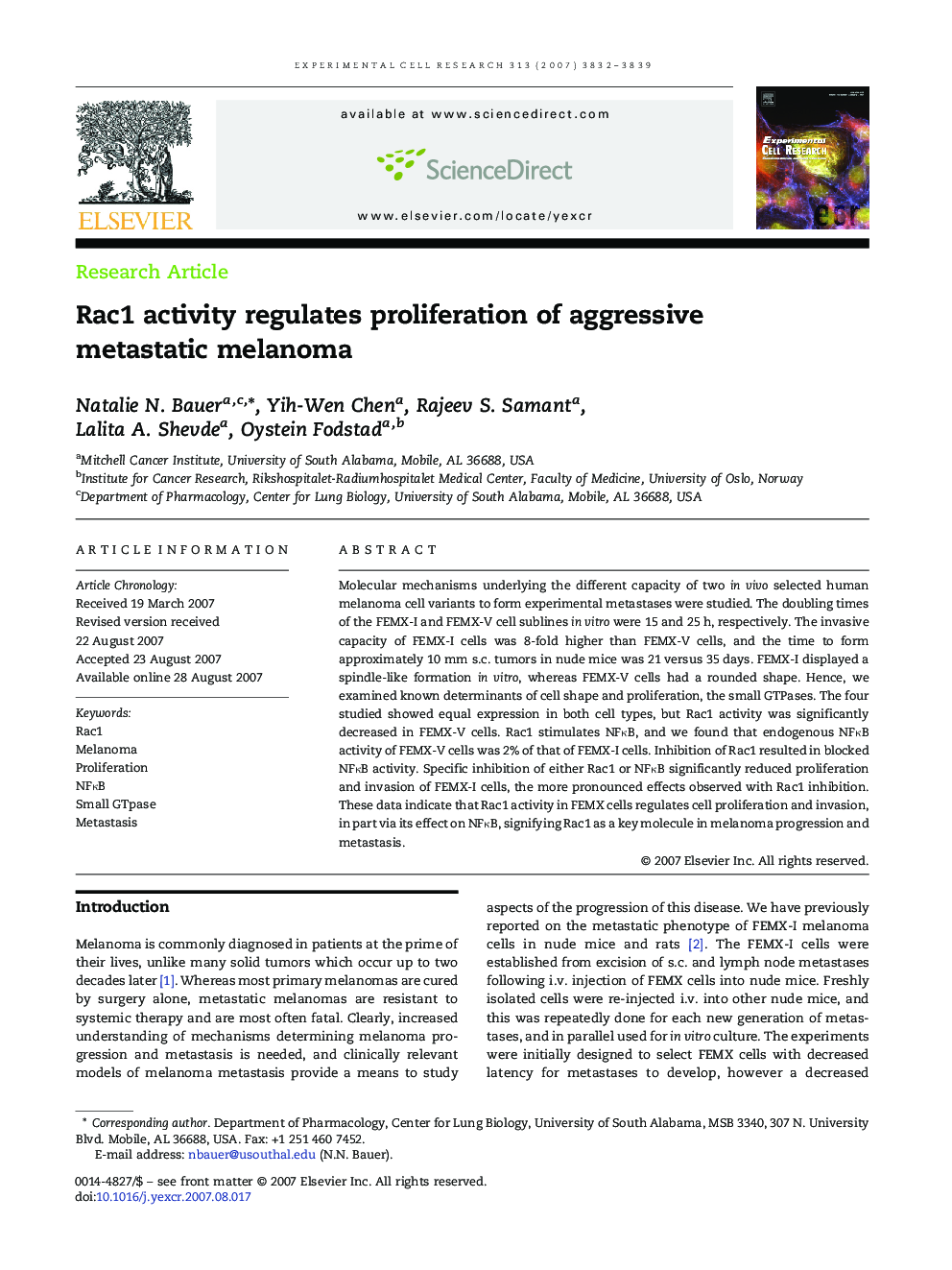| Article ID | Journal | Published Year | Pages | File Type |
|---|---|---|---|---|
| 2132405 | Experimental Cell Research | 2007 | 8 Pages |
Molecular mechanisms underlying the different capacity of two in vivo selected human melanoma cell variants to form experimental metastases were studied. The doubling times of the FEMX-I and FEMX-V cell sublines in vitro were 15 and 25 h, respectively. The invasive capacity of FEMX-I cells was 8-fold higher than FEMX-V cells, and the time to form approximately 10 mm s.c. tumors in nude mice was 21 versus 35 days. FEMX-I displayed a spindle-like formation in vitro, whereas FEMX-V cells had a rounded shape. Hence, we examined known determinants of cell shape and proliferation, the small GTPases. The four studied showed equal expression in both cell types, but Rac1 activity was significantly decreased in FEMX-V cells. Rac1 stimulates NFκB, and we found that endogenous NFκB activity of FEMX-V cells was 2% of that of FEMX-I cells. Inhibition of Rac1 resulted in blocked NFκB activity. Specific inhibition of either Rac1 or NFκB significantly reduced proliferation and invasion of FEMX-I cells, the more pronounced effects observed with Rac1 inhibition. These data indicate that Rac1 activity in FEMX cells regulates cell proliferation and invasion, in part via its effect on NFκB, signifying Rac1 as a key molecule in melanoma progression and metastasis.
